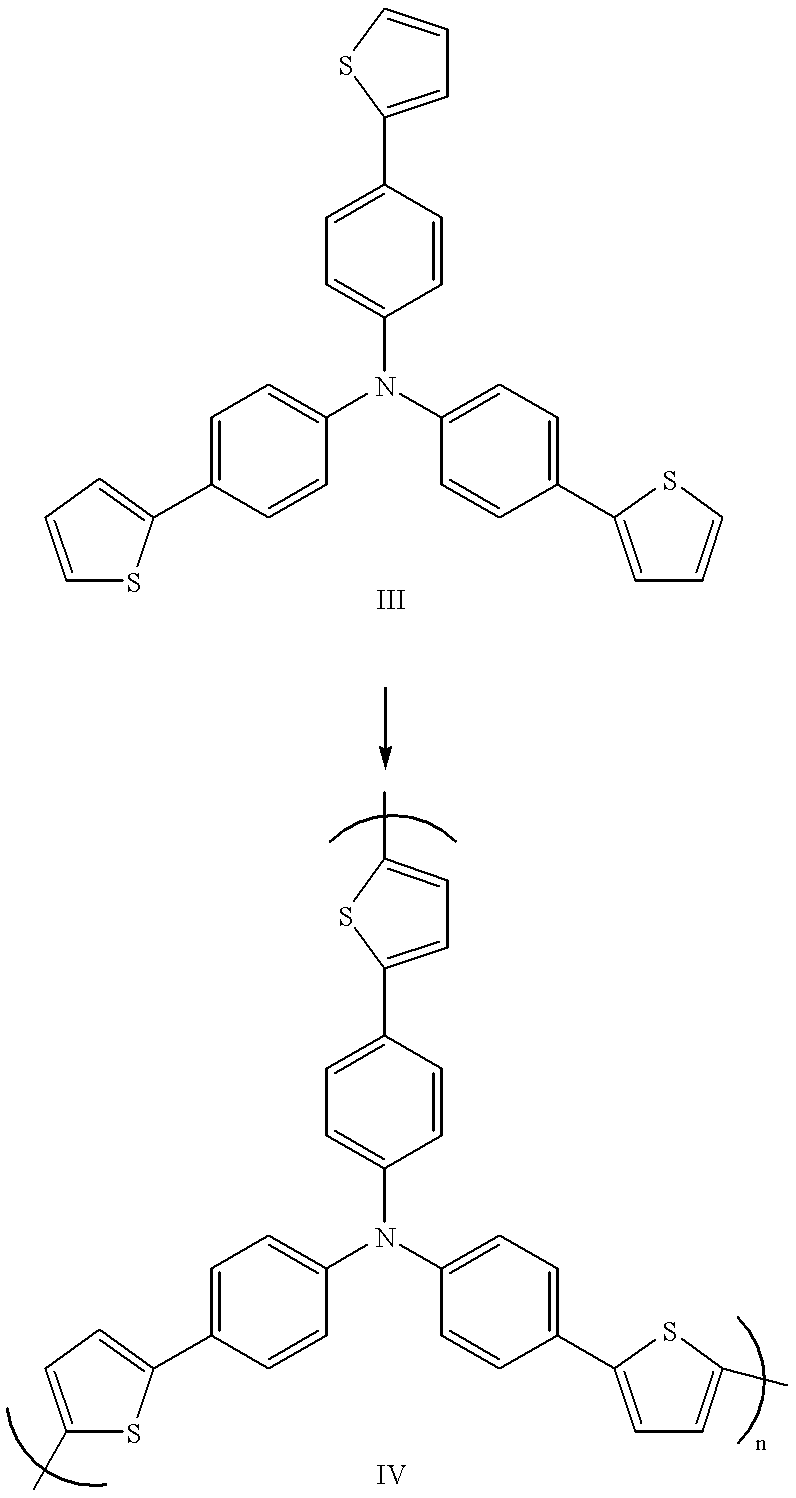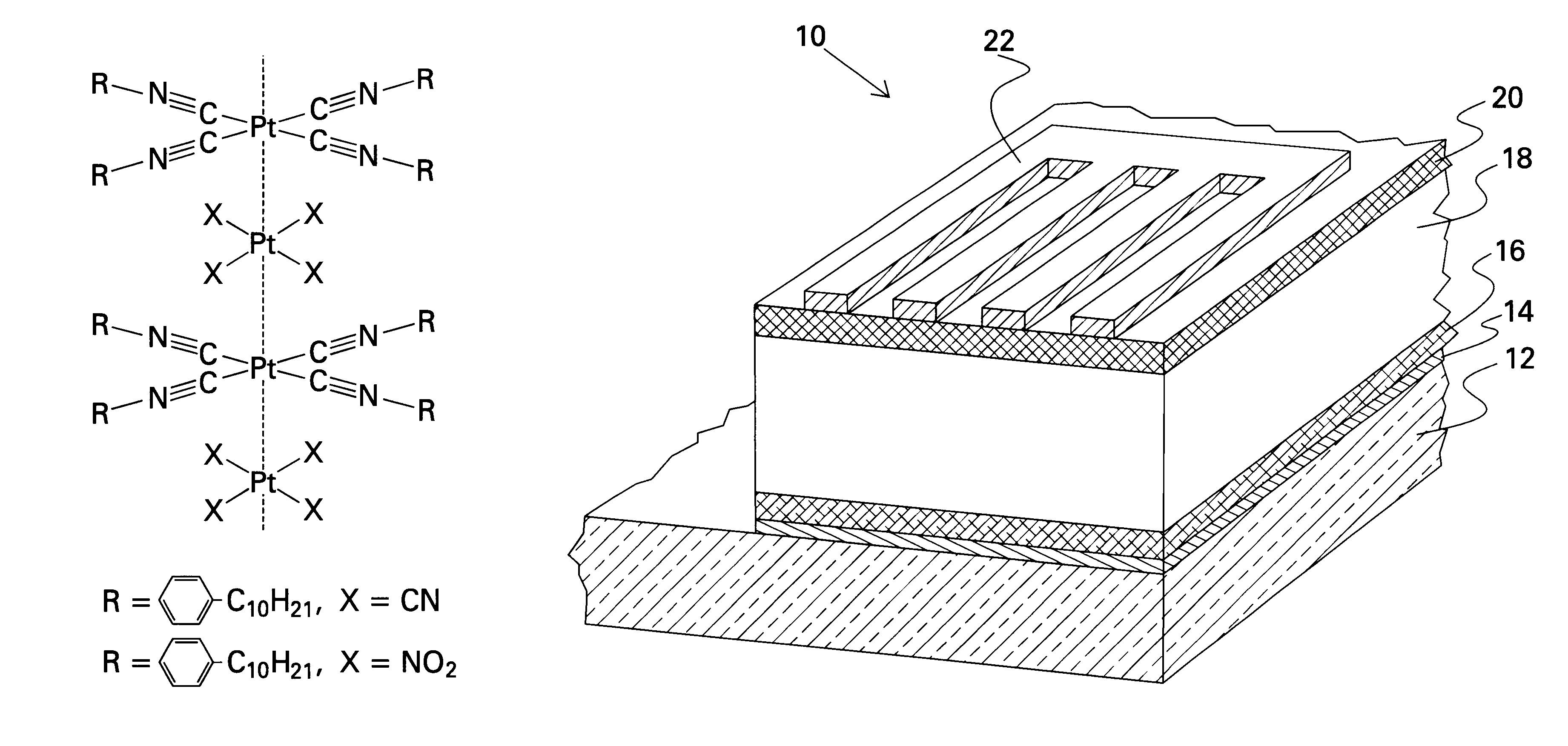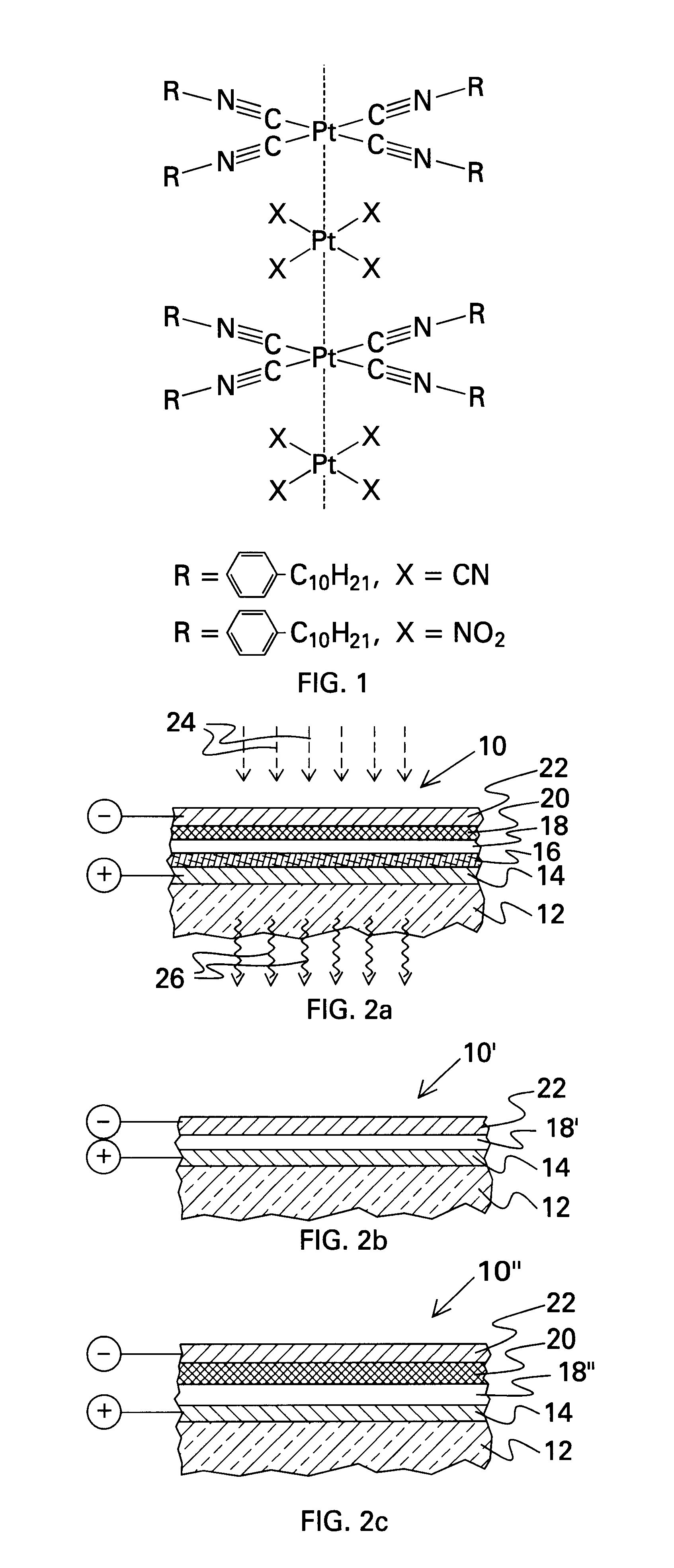Vapochromic LED
- Summary
- Abstract
- Description
- Claims
- Application Information
AI Technical Summary
Benefits of technology
Problems solved by technology
Method used
Image
Examples
Embodiment Construction
In accordance with the present invention, a vapochromic light emitting diode is provided, which is sensitive to certain organic vapors and emits optical radiation upon exposure to the organic vapor. Referring to FIG. 2a, the general structure of the LED 10 is formed on a substrate 12 and comprises:
(a) a first electrode 14 formed on the substrate;
(b) a hole transport layer 16 formed on the first electrode;
(c) a sensing / emitting layer 18 formed on the hole transport layer;
(d) an electron conductor layer 20 formed on the sensing / emitting layer; and
(e) a second electrode 22 formed on the electron conductor layer.
The material comprising the substrate 12 comprises any optically transparent dielectric material having sufficient thickness and strength to support the layers formed thereover. An example of a suitable substrate material includes quartz.
The first electrode 14 comprises indium tin oxide (ITO) or polyaniline or other such material that is both electrically conductive and transpar...
PUM
| Property | Measurement | Unit |
|---|---|---|
| wavelength | aaaaa | aaaaa |
| diameter | aaaaa | aaaaa |
| colors | aaaaa | aaaaa |
Abstract
Description
Claims
Application Information
 Login to View More
Login to View More - R&D
- Intellectual Property
- Life Sciences
- Materials
- Tech Scout
- Unparalleled Data Quality
- Higher Quality Content
- 60% Fewer Hallucinations
Browse by: Latest US Patents, China's latest patents, Technical Efficacy Thesaurus, Application Domain, Technology Topic, Popular Technical Reports.
© 2025 PatSnap. All rights reserved.Legal|Privacy policy|Modern Slavery Act Transparency Statement|Sitemap|About US| Contact US: help@patsnap.com



